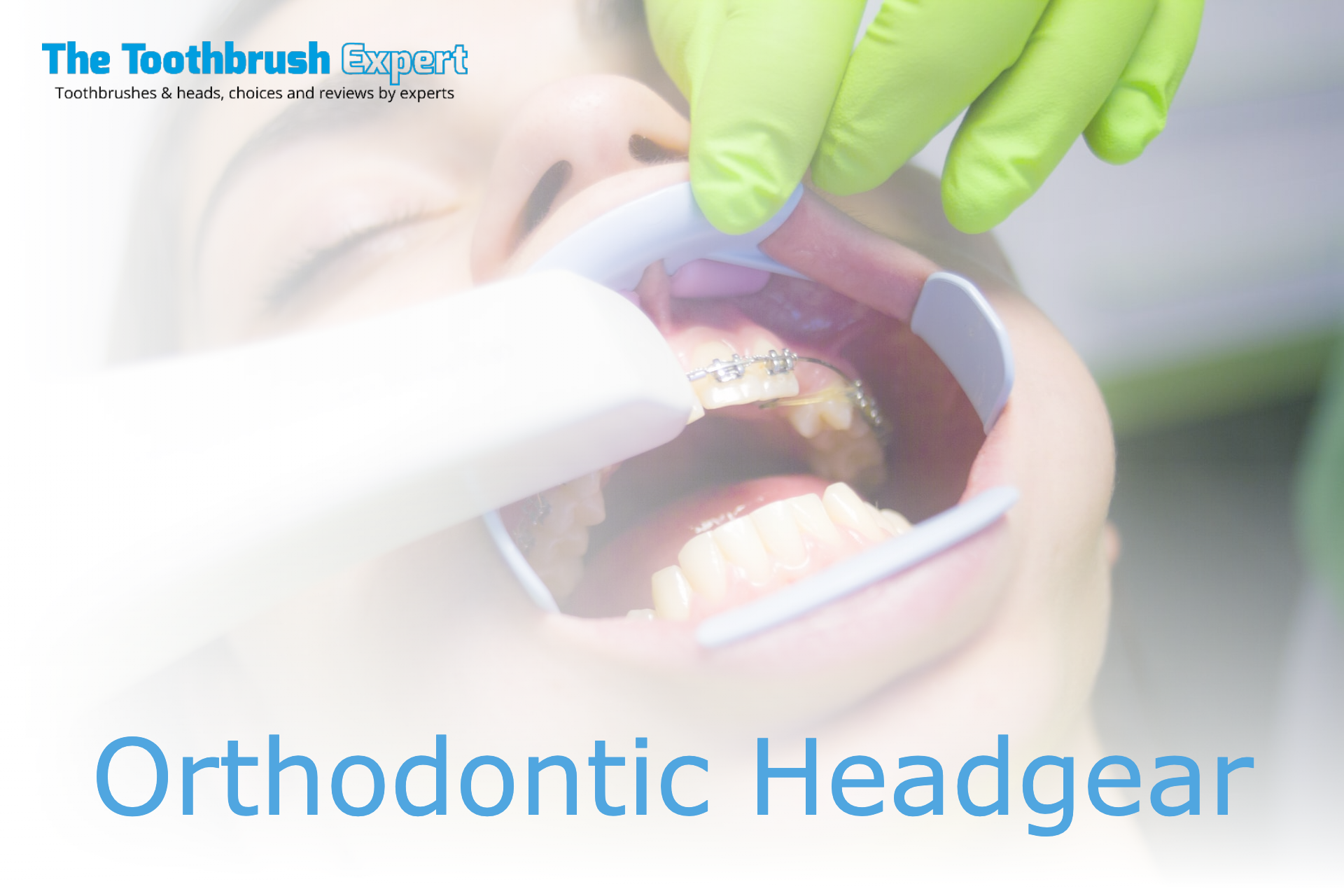Headgear is an orthodontic device designed to treat different bite problems linked to irregular jaw positioning. This device uses a neck strap to attach to a patient’s head or face.
Children aged 9 and above are the most common age category that makes use of headgear. During that stage of life, a child’s bones and jaws are developing and growing rapidly. Headgear works to reposition jaw abnormalities early on, thus helping to prevent any need for jaw surgery in the future.
All medical content on this site, including this guide and other product reviews, is written by our team of experienced writers and researchers. All writers from The Toothbrush Expert are recommended and reviewed in the industry. You support us through our editorially chosen links, which earn us commission. learn more
All of our picks have the American Dental Association (ADA) Seal of Acceptance.
Why is Headgear Used With Braces?
Unlike braces that can be used alone, headgear can only be used together with the former. While braces only correct the positioning of the teeth, headgear can influence the jaws’ growth. However, wearing headgear is usually unnecessary if a patient doesn’t suffer severe bite problems.
Find out the best products to use with braces according to our experts!
You can read all about these products in our reviews about the best toothbrush for braces, best toothpaste for braces and best water flosser for braces.
Types of Headgear & Conditions They Fix
As we hinted earlier, orthodontic headgear is usually necessary only when a patient is suffering from an underbite, crossbite, open bite, overbite, and overjet. The patient’s type of malocclusion determines the type of headgear required for treatment.
The common headgear devices are cervical pull headgear, high pull headgear, and reverse pull headgear. We will dissect each of them below and help you understand their specific functions.
1 – Cervical Pull Headgear
Cervical pull headgear is ideal for Class II malocclusions (overjets and overbites).
Overbite
Orthodontists use cervical pull headgear to treat “overbite”. Overbite is a dental condition where the lower front teeth are overlapped by the upper front teeth. An overbite classified as a Class II malocclusion (teeth misalignment). Although braces are expected to treat teeth misalignment, they can’t treat class II malocclusion alone.
Besides, the cervical pull headgear holds the upper jaw and teeth in place while the lower jaw moves forward.
Overjet
Overjet – also known as buck teeth or upper front teeth protrusion – also requires cervical pull headgear for treatment. It is a dental condition where the upper front teeth extend outwards over the lower front teeth.
2 – Reverse-Pull Headgear (Facemask or Facebow)
Reverse pull headgear boasts pads that attach to the chin and forehead with the frame of a facemask in between. Rubber bands from the braces’ anchorage device are connected to the frame for treatment.
Reverse pull headgear is ideal for Class III malocclusions (underbites and crossbites).
Underbite
An underbite is a dental health condition where the bottom front teeth stick out in front of the top front teeth. Also, this condition can’t be treated with only braces. The device helps to move the upper jaw forward, aligning the lower and upper jaws over time. If the headgear is used to correct an underbite at the early stage of a person’s life, it can get rid of the need for jaw surgery in the future.
Crossbite
A crossbite is a dental health condition where the lower and upper teeth don’t align correctly when the affected patient bites down. It occurs when some bottom teeth are placed outside the upper teeth when the upper and lower jaws are closed. Just like underbite, reverse pull headgear moves the upper jaw forward so that it can align with the lower and upper jaws over time.
3 – High Pull Headgear
High pull headgear – another type of headgear – attaches to the upper jaw, top of the head, and back of the head. The device directs jaw growth and also improves alignment.
High pull headgear ideal for an open bite.
Open Bite
Open bite is a rare type of malocclusion known to only affect less than 1% of most countries. It occurs when the front lower and upper teeth slant outwards and don’t touch when the mouth closes.
Side Effects of Wearing Headgear
While headgear works to correct different oral health conditions, it’s not without its negative side effects. It’s common for some patients to experience minor side effects, but others may experience more serious issues. You should consult your orthodontist if you or your child develops any of the following side effects:
- Headgear causes the development of sleep apnea. It may even worsen the condition. This condition results in irregular breathing while sleeping.
- It cases unusual pain that gets worse over time. Although this condition is rare, some patients experience it. You must visit your orthodontist if the pain doesn’t reduce or gets worse after some weeks of normal wear.
- The band on your back teeth – first molars – that attaches to the headgear may detach
- The device may become loose or not fit properly.
How Do You Wear Orthodontic Headgear?
The headgear should be worn for 12-14 hours each day. For effective treatment, orthodontists recommend the following:
- Wear the headgear while sleeping, not just throughout the day at school or work. The longer the device is worn, the quicker your teeth and jaws will move to the right places.
- In the early stage, you should wear the device for only a few hours daily and steadily graduate to wearing it for 12-14 hours daily.
- Once the teeth and jaw have shifted to the correct positions, you should visit your orthodontist to limit the amount of time you wear the headgear daily.
- You should never wear headgear while playing sports or engaging in other activities that could push or pull the device.
Frequently Asked Questions On Orthodontic Headgear
Headgear has no specific cost. The cost varies based on the device needed for treatment and the length of treatment. You need to speak to your orthodontist to decide on a payment plan if they will accept insurance and the duration of the treatment. Averagely, headgear treatment costs between £1,000 and $9/000.
Yes, it may hurt. During the first few weeks of treatment, most patients suffer mild to moderate pain. This usually occurs because the teeth are adjusting to the presence of the device.
If you or your child experiences pain, you can use Ibuprofen or any over-the-counter pain reliever to lessen the effect. The pain from wearing headgear usually goes away after a few days.
Although adults are typically not headgear candidates because their teeth and jaws have completely developed, they can still wear it if they need minor bite correction or teeth straightening as a result of an accident.
Also, an adult may need headgear if they lose a few teeth. The device helps to keep the remaining teeth in place while they await dentures or dental implants.
Headgear is usually worn 12 hours daily. Many patients favor wearing the device while they’re asleep and then for some hours the next day. The treatment takes 1-2 years.
References
Cobourne, Martyn T., and Andrew T. DiBiase. Handbook of Orthodontics E-Book. Elsevier, 2015.
Proffit, William R., et al. Contemporary Orthodontics. Elsevier/Mosby, 2019.


Dr Michael Jones is the proud founder of The Toothbrush Expert. He has been working as a dentist for 21 years now. Besides his work as a dentist, Michael wants to help people to find the right dental products. His goal is to provide everyone with honest expert reviews on all kinds of dental care products.





